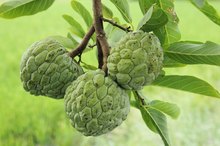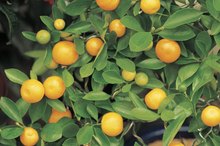Should You Be Eating Vegetable and Fruit Skins?
I was at the farmers’ market the other day and one of the farmers told me he keeps the peel on everything he eats. That, combined with recent social media posts I’ve seen about banana peels, inspired me to explore whether to peel or not to peel my produce.
The good news is that fruit/vegetable peels and skins contain some healthy plant phytochemical and fiber, but the bad news is that they can also bring contaminants to our table. Let’s dig in a bit deeper:
Eating and/or using the peels of fruits and vegetables increase dietary fiber and other nutrients and also cuts down on food waste. Although most of us don’t think about conserving and eating every bit of nutrient available to us, it’s a practice that’s healthy for us and for our planet.
There are some fruits and veggies, however, whose skin is inedible, difficult to digest or has a bitter taste.
If you’re planning to eat the peel, it’s also a good idea to buy organic, as non-organic skins are likely to be sprayed with pesticides. Here are some guidelines on specific fruits and veggies:
When NOT to Eat the Skin
Citrus: The peels of citrus fruit (oranges, grapefruit, lemons, etc.) have a ton of vitamin C, riboflavin, vitamin B6, calcium, magnesium and potassium as well as anti-inflammatory flavonoids. However, the peel is bitter and difficult to digest. You can grate the peels into a zest and use it in salad dressings, over ice cream or baked goods, or dry slices of the peel and infuse it with sugar, oil or vinegar.
The white pith between the peel and the flesh is also super high in fiber (although it is a bit bitter), so try not to peel to much of it away when you’re peeling your orange.
Onion: Although eating onion skin generally isn’t a good idea, it does contains quercetin, so I’d suggest using it in stocks.
Banana: Banana peel has a bitter taste and tough consistency but contains potassium, lutein (a powerful antioxidant for eye health) and tryptophan (that increases your body’s serotonin, which improves mood). If you want to try banana peel, here are some tips: use very ripe peels; use a small amount in your smoothie; or boil it for a few minutes, then sauté or bake in the oven until it dries out to use as a tea.
Asparagus: The skin on asparagus doesn’t contain any additional nutritional benefits over the flesh, but it can leave behind a stringy texture. So purely from a culinary perspective, I’d suggest peeling the skin if you have the time to peel each stalk individually.
- Citrus: The peels of citrus fruit (oranges have a ton of vitamin C, riboflavin, vitamin B6, calcium, magnesium and potassium as well as anti-inflammatory flavonoids.
- If you want to try banana peel, here are some tips: use very ripe peels; use a small amount in your smoothie; or boil it for a few minutes, then sauté or bake in the oven until it dries out to use as a tea.
When to Eat the Skin (If Organic)
How to Eat Cherimoya
Learn More
Cucumber: This veggie’s dark-green skin contains the majority of antioxidants, insoluble fiber and potassium. If a cucumber has a heavy waxed coating and pesticides, you may consider peeling.
Zucchini: The skin of zucchini contains extra vitamin C, fiber and potassium, as well as the antioxidants carotenoids, lutein and zeaxanthin. Although the flavor is a bit bitter, if you’re cooking them or mixing them with other flavors (e.g. in a salad) it’s worth it to keep the skin on.
Apple: Apple peel contains most of the fruit’s insoluble fiber, an antioxidant called quercetin and other antioxidants.
Potato: Ounce for ounce, potato skin has more fiber, iron, potassium, B vitamins and vitamin C than the flesh.
Kiwi: Kiwi skin is probably one skin that most of us do not eat, but it IS edible!
The skin contains more flavonoids, antioxidants and vitamin C than the flesh. If the fuzz grosses you out, scrape it off first.
Eggplant: Eggplant’s purple peel color comes from an antioxidant in the anthocyanin family, found in only small amounts in the flesh. Definitely leave the peel on, but try to buy unwaxed eggplants, otherwise you may be eating a good dose of pesticides.
Carrot: Most of the nutrients, carotene and various antioxidants in carrots are in or just below the skin. Just scrub, cut off ends, and eat!
Squash: It may seem like all squash have a super hard skin, but you can bake most varieties with the skin on and eat it once baked. Delicata, acorn and sweet dumpling squashes have softer skins, while some squash skins such as spaghetti squash and pumpkin are tougher and difficult to digest, even when cooked.
Whether you’re eating the skin or not, it’s generally a good idea to rinse all vegetables with clean, cold water and scrub gently with a vegetable brush to remove some of the pesticide residue or dirt and bacteria. Even organic produce has organic fertilizer residues. Hard peels such as melons, winter squashes and pineapple should be washed before cutting into them to prevent contaminating the flesh.
If eating vegetable and fruit peels just isn’t your cup of tea, there are other ways you can get their nutritional benefits:
- Make a vegetable stock from potato, parsnip, turnip and carrot peels, onion skins, leek ends, etc.
- Citrus peels can be preserved, pickled, made into marmalades, citrus extract powder, citrus sugar, zest, or infused into olive oil or honey or vinegar.
- Use them to flavor drinking water.
- Use them in poultry brine recipes.
- Some fruits and vegetables can be used as beauty products or household cleaning products.
Lea Basch, M.S., RD, is the registered dietitian for The Tasteful Pantry. Lea has been in the nutrition industry for more than 30 years and was one of the founders of Longmont United Hospital's nutrition program in Boulder, Colorado. She is a diabetes educator and focuses now on gluten-free diets and food intolerances. Lea's passion is combining the science of nutrition with the heart that it takes to change lifelong habits.
Connect with Lea and The Tasteful Pantry on Facebook, Twitter, Pinterest and Instagram.
- Cucumber: This veggie’s dark-green skin contains the majority of antioxidants, insoluble fiber and potassium.
- Squash: It may seem like all squash have a super hard skin, but you can bake most varieties with the skin on and eat it once baked.
- Use them to flavor drinking water.
- -
Related Articles
References
- O'connor AA, Lowe PM, Shumack S, Lim AC. Chemical peels: a review of current practice. Australas J Dermatol. 2018;59(3):171-181. doi:10.1111/ajd.12715
- Castillo DE, Keri JE. Chemical peels in the treatment of acne: patient selection and perspectives. Clin Cosmet Investig Dermatol. 2018;11:365–372. doi:10.2147/CCID.S137788
- Soleymani T, Lanoue J, Rahman Z. A practical approach to chemical peels: a review of fundamentals and step-by-step algorithmic protocol for treatment. J Clin Aesthet Dermatol. 2018;11(8):21–28.
- Cleveland Clinic. Chemical peels: what to expect.
- Cleveland Clinic. Chemical peels: how to prepare.
- Stanford Healthcare. Techniques: our approach to chemical skin peels.
- Cleveland Clinic. What results can I expect?.
Writer Bio
Lea Basch, M.S., RD is the registered dietitian for The Tasteful Pantry. Lea has been in the nutrition industry for over 30 years and was one of the founders of Longmont United Hospital’s nutrition program in Boulder, Colorado. She's a diabetes educator and focuses on gluten-free diets and food intolerances.









